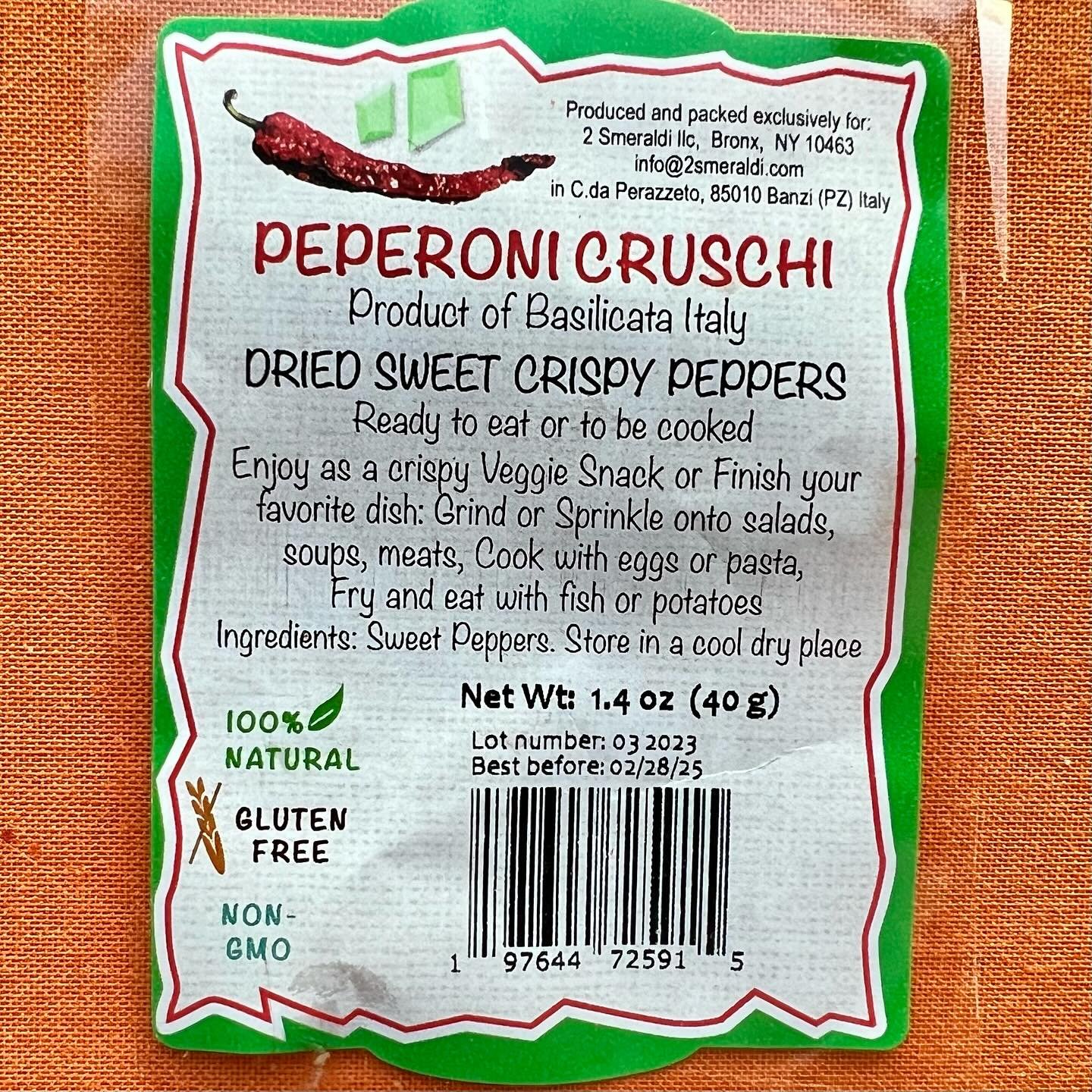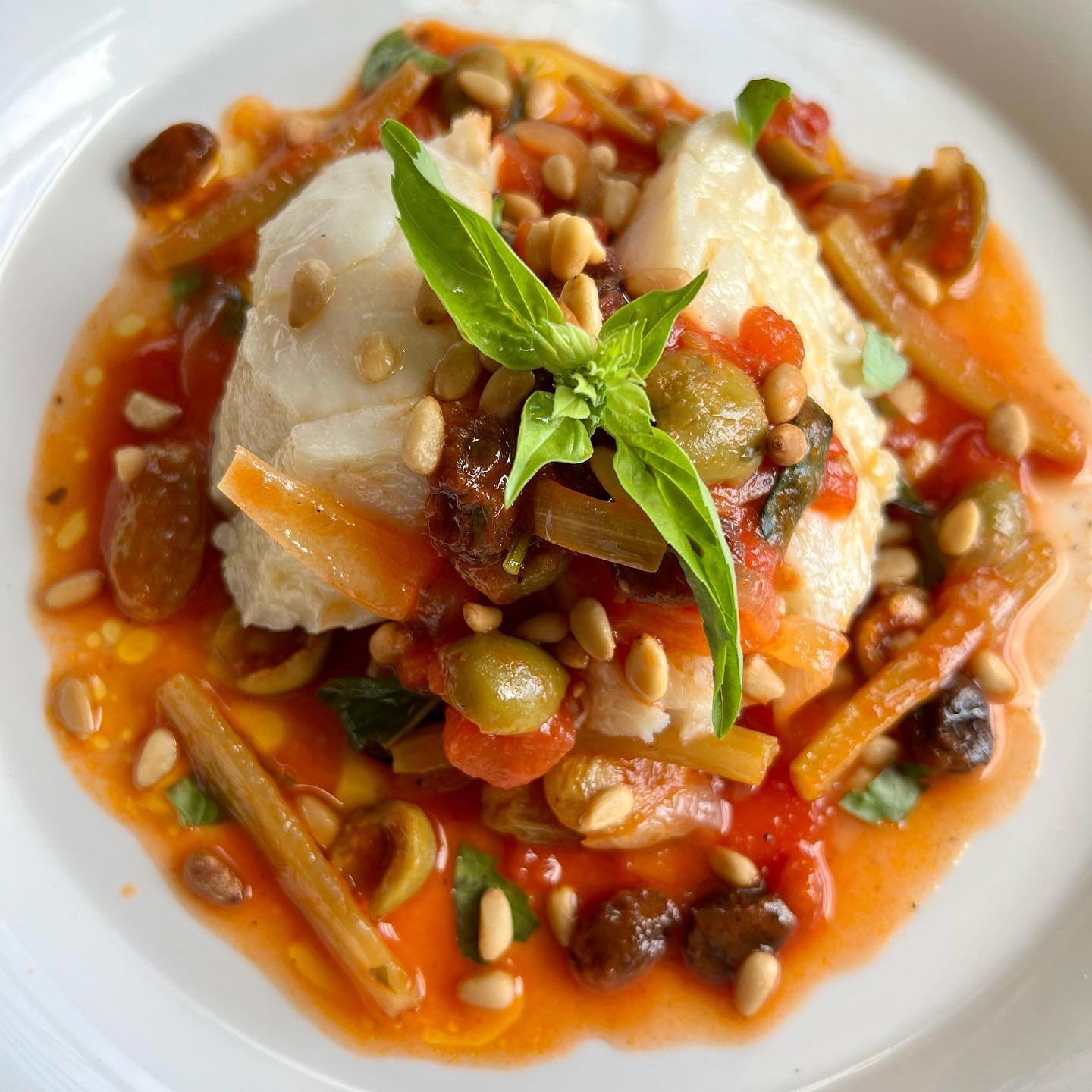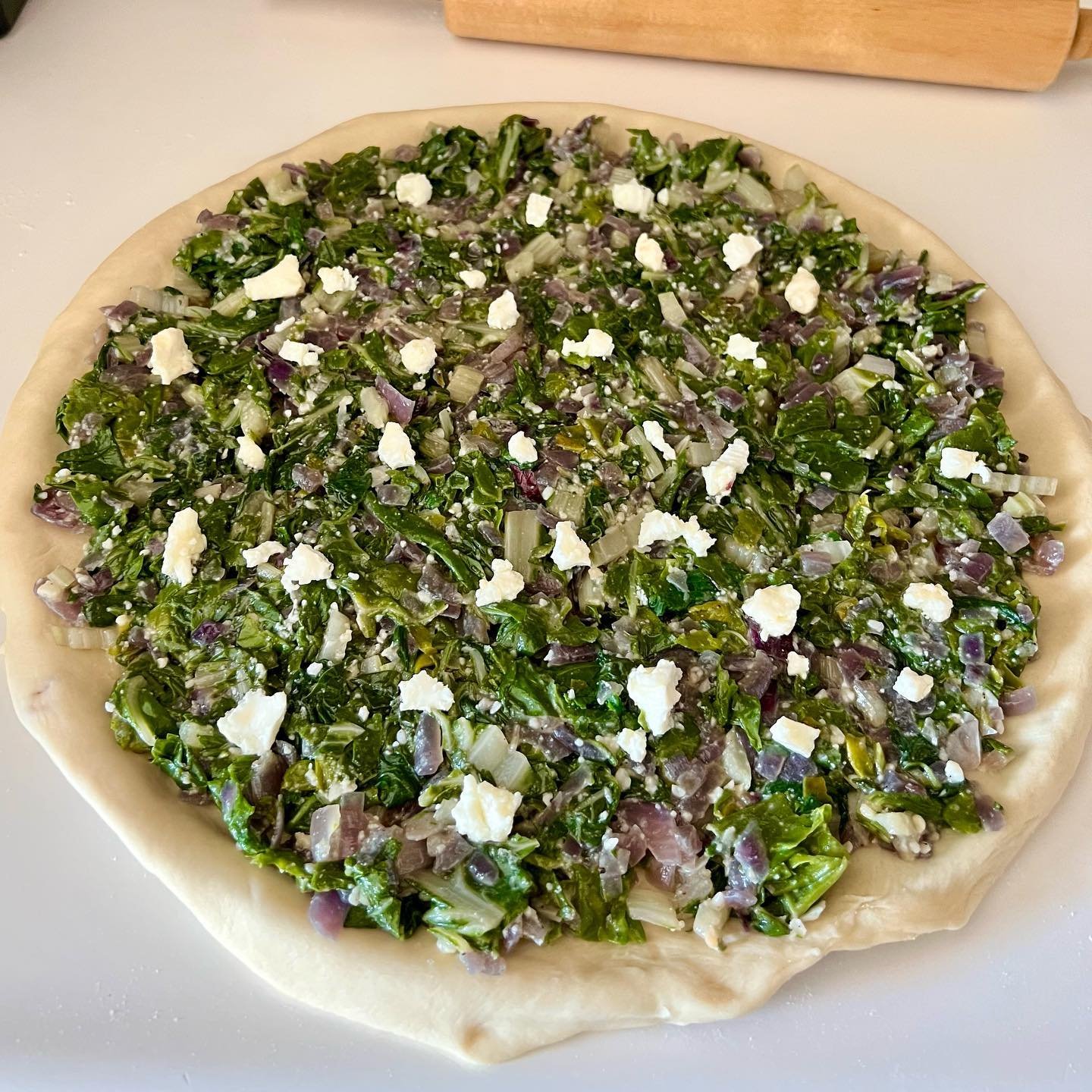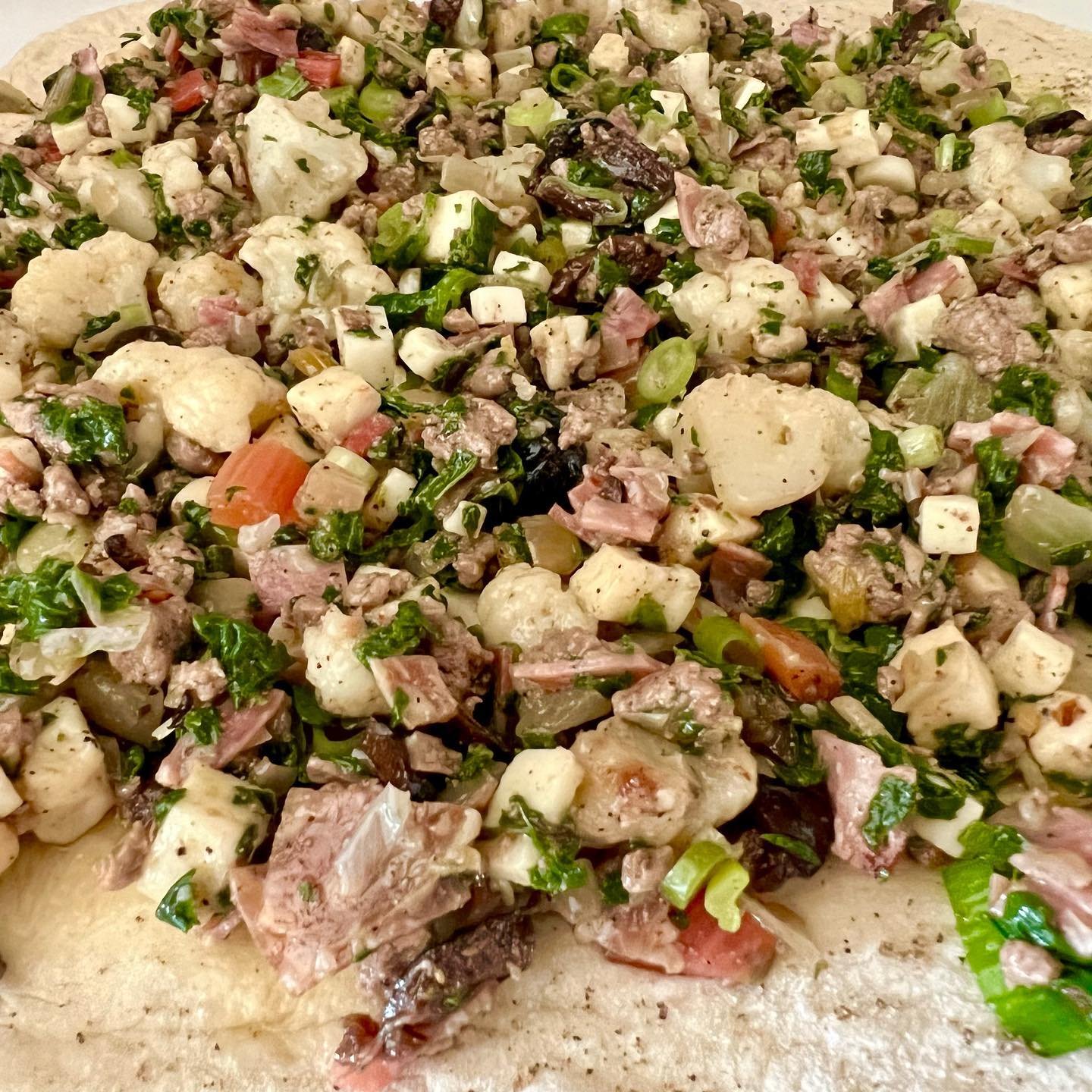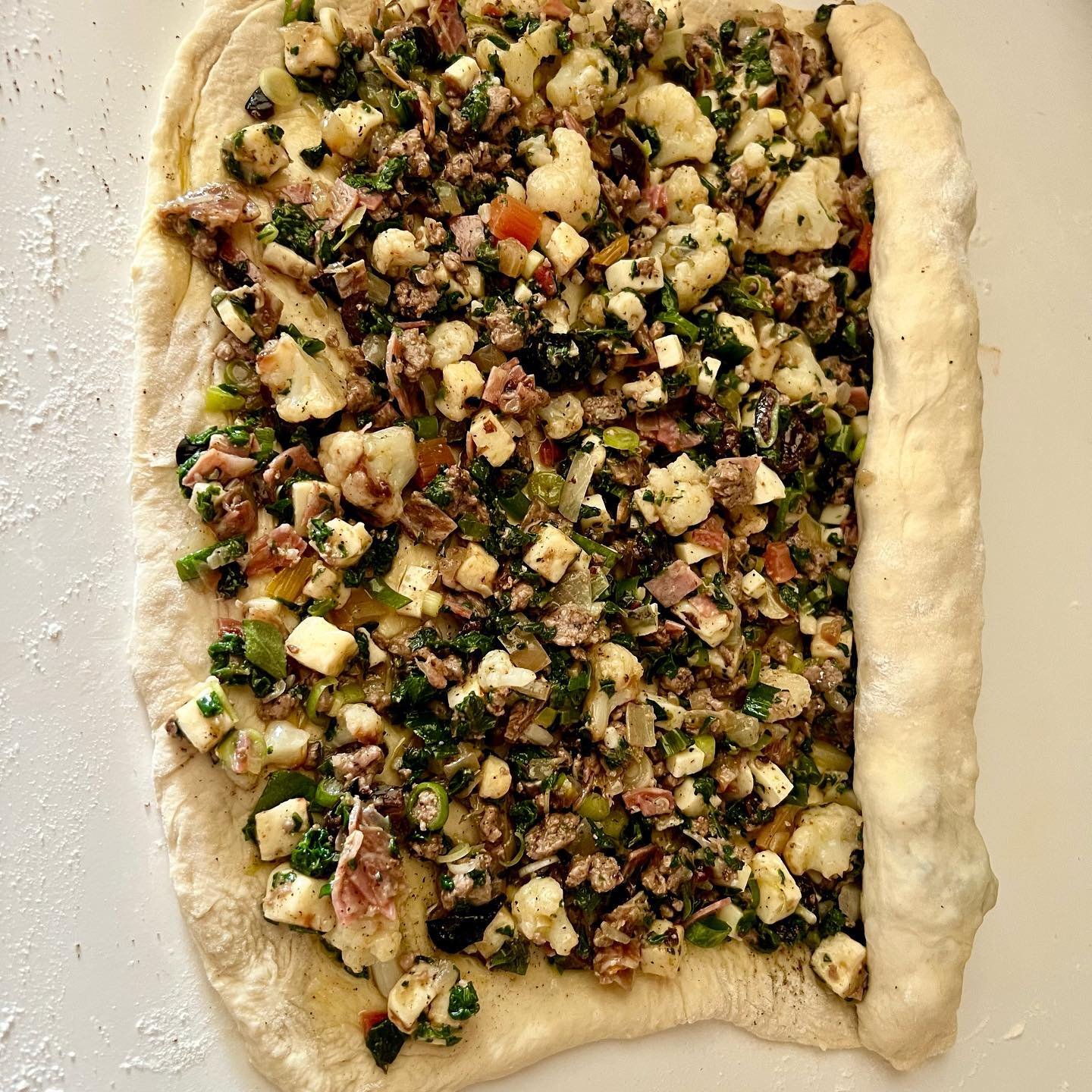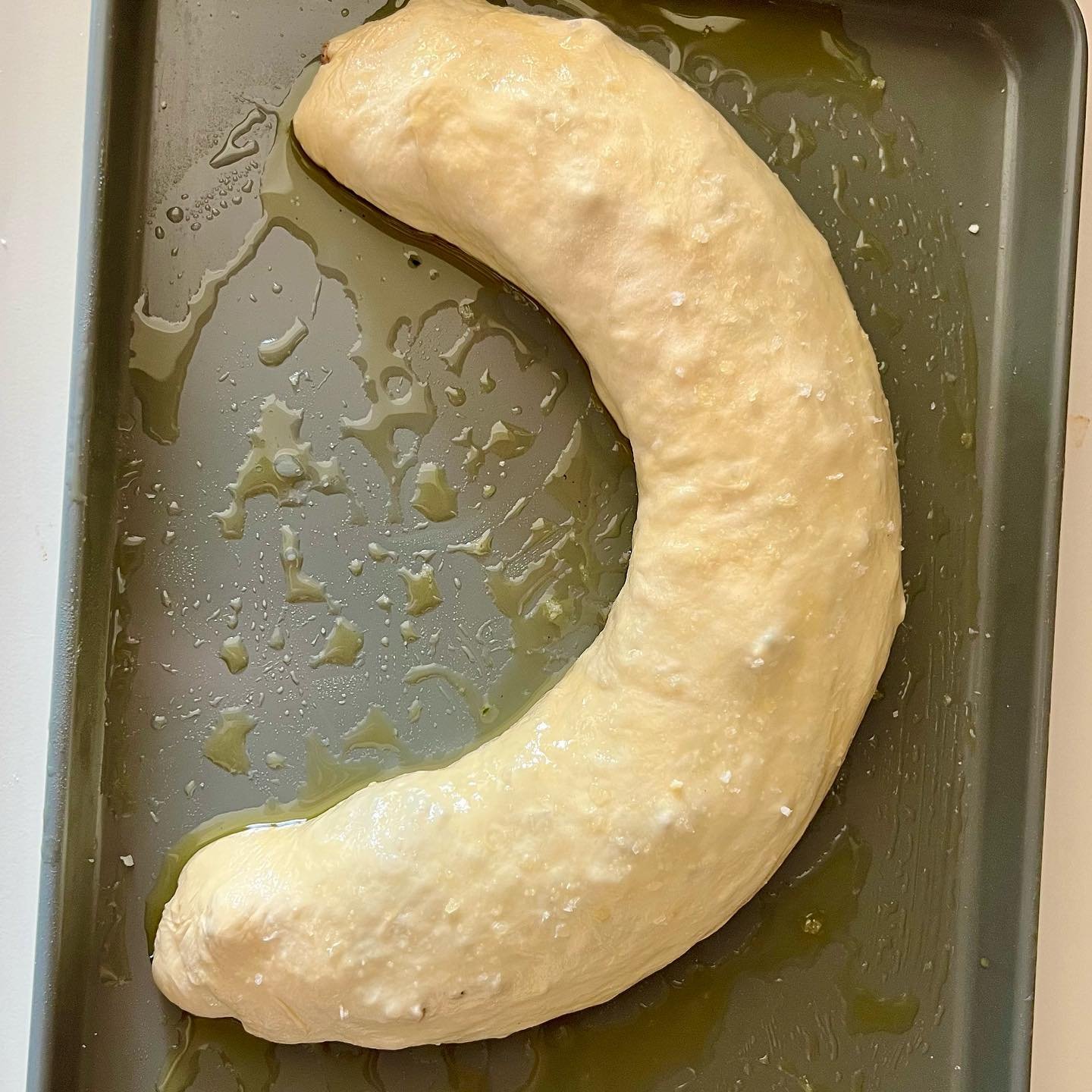Fiori di Zucca Ripieni
This is a test excerpt. Click to read more…
Squash Blossoms filled with Sausage, Mozzarella and crusted with Breadcrumbs, Pistachios and grated Pecorino cheese.
This is one of those Sicilian food remnants that can trace it's roots to the Arab rule of that island in the 900's. Zucchini flowers, or any kind of squash really, can be found filled with a variety of fillings, sometimes nothing but a single anchovy, other more elaborate mixtures of ricotta or other cheeses.
Most commonly you will find squash blossoms batter fried but the results are too often lackluster. I had some the other day at an uncaring restaurant in which they were filled with a boring mozzarella and dredged in thick batter, they barely tasted of anything.
I have been quietly salivating over this recipe all summer long, I like that they are baked instead of fried and that instead of a batter they are coated in equal parts breadcrumbs / pistachios / pecorino cheese. I used store bought Italian sausage with several extra big pinches of fennel seeds mixed in.
My neighbor grew the zucchini on the plate on our shared fire escape, indeed he gave me three blossoms too but I had to purchase more to create a substantial batch.
For the zucchini salad on the plate all I did was slice them wafer thin and anoint them with extra virgin olive oil, salt, lemon and mint.
BRACIOLE
This is my family’s signature dish reserved for special occasions. We had a weathered old index card with my grandmothers hand-written recipe on it in a drawer near the stovetop.
The origins of Braciole in Italy weave through history, with written records resembling our dish dating back to the 13th century. However it is with the Sicilian dialect word ‘Farsumagru’, this would coincide with the French rule of that island. The French term for filling for meat is ‘Farcie’, the Sicilian word ‘Magru’ means ‘lean’ so it seems that the Sicilian description was referring to a lean cut of meat filled with a stuffing.
However, the term 'Braciole' remains enigmatic, adopting different meanings in various regions. I once saw a chalkboard menu outside a restaurant in Umbria with the days special of “Braciola”, what they brought me was a grilled pork chop. I since learned that the word “Braciola/Braciole” (the ‘a’ and the ‘e’ just signify singular or plural) can mean any cut of meat that has been pounded or flattened. It also might mean grilled which our family recipe certainly is not! The closest food I found myself in Sicily were under the title ‘Involtini’.
Our rendition involves butterflied and pounded flank steak I always read of others using top round so I wanted to try that variation today. The filling is mainly breadcrumbs mixed with tomato sauce and cheese until thick, also a layer of prosciutto and herbs. My grandparents recipe included hard boiled eggs as well, but my mom and I never liked that part so we omit them. The concoction is skillfully rolled, tied, browned, and then lovingly braised for hours in a tomato sauce enriched with a generous amount of red wine.
Pasta con i Peperoni Cruschi
The town of Matera, located in the Basilicata region of Italy, is the oldest continuously inhabited cities in the country uninterrupted since Palaeolithic times. One of the famed ingredients from this area is the Peperone di Senise, a thin, intense but sweet pepper with a paper thin skin, they are strung together on strings and hung in the open air to dry in the sun resulting in a wispy featherweight and ultra crisp texture.
I had some difficulty sourcing Peperone di Senise as none of the Italian shops in my town have them. Fortunately, I was able to locate them on Amazon. They may look like ordinary hot chili peppers but these peppers are not spicy at all. Instead, they offer a remarkable combination of intense earthiness, fruity notes, and a subtle smokiness.
In Matera these peppers are used to make their signature Pasta con i Peperoni Cruschi. The dried peppers are toasted in a hot pan with olive oil until they become deliriously crispy and then crunched to bits and mixed with pasta flavored with garlic and anchovy and finished off with course breadcrumbs fried in olive oil.
The town of Matera, located in the Basilicata region of Italy, is the oldest continuously inhabited cities in the country uninterrupted since Palaeolithic times. One of the famed ingredients from this area is the Peperone di Senise, a thin, intense but sweet pepper with a paper thin skin, they are strung together on strings and hung in the open air to dry in the sun resulting in a wispy featherweight and ultra crisp texture.
I had some difficulty sourcing Peperone di Senise as none of the Italian shops in my town have them. Fortunately, I was able to locate them on Amazon. They may look like ordinary hot chili peppers but these peppers are not spicy at all. Instead, they offer a remarkable combination of intense earthiness, fruity notes, and a subtle smokiness.
In Matera these peppers are used to make their signature Pasta con i Peperoni Cruschi. The dried peppers are toasted in a hot pan with olive oil until they become deliriously crispy and then crunched to bits and mixed with pasta flavored with garlic and anchovy and finished off with course breadcrumbs fried in olive oil.
PORCINI
The most noble of all the edible mushroom world is the Boletus edulis, known commonly as Porcini in Italian and English and Cèpes in French.
READ MORE…
The most noble of all the edible mushroom world is the Boletus edulis, known commonly as Porcini in Italian and English and Cèpes in French.
Today I was gifted half of a huge honking Porcino (singular) which was more than enough for one person. I can't remember the last time I had my hands on a fresh Porcini, it's been years for sure, I often use the dried variety, which I also love, but it is something very special to have a fresh one.
My favorite way to cook them is a funny Italian term called Funghi al Funghetto, it basically means "Mushrooms cooked like Mushrooms", Italians believe that the correct way to cook mushrooms is to saute them first in just olive oil then after a few minutes minced garlic and shallots, aromatic herbs and parsley are added, then a little whole butter, finally a tiny splash of white wine. You can cook loads of things al Funghetto, like eggplant done this way is called Melanzane al Funghetto, which translates to "Eggplant Cooked Like Mushrooms". There is a nearly identical Italian term called "Trifolati" which uses the same ingredients but I prefer the goofiness of the term "Al Funghetto".
Nearly every restaurant in Rome offers Porcini al Funghetto (or Trifolati) as a side dish but it is important to look at the menu carefully, if there is an asterisk next to the dish that means the restaurant is using frozen Porcini, Italian law requires this kind of labeling. Nothing is inherently wrong frozen Porcini except that they taste very flabby and dull. A fresh one sauteed like I described has a nutty essence reminiscent of chestnuts and has a very silky and luxuriously creamy texture, they also have a meaty umami flavor when fresh
Baccalà all'Orvietana
Read More…
One dish on my list of foods to find in Orvieto was Baccalà all'Orvietana. I came across a recipe for it while planning my trip a few months ago. I made it at home back in July to get an idea of what it was all about and my intention then was to find one in Orvieto and compare.
Again, just like the Etruscans tried to stay self-sufficient on their mountaintop citadel from Roman sieges by having fresh water wells and raising pigeons, later Orvietans found salt-cod to be handy for the same reasons. Only by this time it wasn’t the Romans attacking but other neighboring tribes like the Lombards, Goths, the French — you name it. Salt Cod, though not indigenous to the area, was a non-perishable protein that the Orvietans could store in their zillions of dark caves.
It wasn’t hard to find, Baccalà all'Orvietana. It’s on loads of menus there, as well as a handful of other salt-cod preparations. The main difference between the one I had in Orvieto and the one I made at home was that mine was very scant with the tomato, more of a tomato broth than a sauce, mine also had olives. Other than that they were very similar, although, I dare say I like mine better!
First picture is my own Baccalà all'Orvietana that I made at home before ever going to Orvieto. Second picture is the one I found in Orvieto. Both were tasty but mine looked better.
Erbazzone Reggiano
Read more…
Erbazzone Reggiano are thin, crisp savory pies chock full of Swiss chard, Parmigiano Reggiano and slow cooked onion, sometimes pancetta too but I didn't have any. Other variations contain ricotta or potatoes or rice.
Erbazzone can be found in the Italian region of Emilia-Romagna from June through November (chard season).
'Nfigghiulata Antica
Read More…
'Nfigghiulata Antica
Something I hoped to find on my recent trip to Sicily was 'Nfigghiulata. I searched Palermo's restaurant menus posted in windows, pastry shops, bakeries, but couldn't find a single one. Even online it is an elusive term to search for, it's complicated spelling doesn't help matters.
'Nfigghiulata must be very old. The recipe I learned from my late mentor Carlo Middione called it 'Nfigghiulata Antica meaning 'in the old style' or 'ancient'. He suggests it most likely comes from the time of Saracen rule of Sicily from at least 900-1100 due to the tradition of forming the role into a crescent shape when there is no other reason to do so. I always thought it would make more sense to shape it long and straight to make slicing later more uniform. However every one I ever made including this one just for myself I couldn't resist sticking with the traditional crescent. Croissants are shaped this way for the reason, because they share the same origins.
The actual Saracen (or Moorish, or Berber, or Muslim.. terms change over time) influence in architecture and cuisine lasted much longer than their relatively short rule, in fact most of the more famous Sicilian dishes recognized world wide stem from this period; Caponata, Cassata. Arancini, Cannoli, Pasta coi le Sarde, Panelle, etc.
Carlo's recipe for 'Nfigghiulata Antica is really regal, focaccia dough (or Scaccia) is rolled thin, topped with lightly cooked ground veal, swiss chard, onions, spring onions, pitted olives, cauliflower florets, minced salami, provolone cheese then rolled up gently, shaped into a crescent, then baked for an hour taking time to baste it with olive oil every fifteen minutes.
If you are curious enough to want to make this may I suggest Carlo’s indispensable cookbook The Food Of Southern Italy page 64.
Pesce all' Acqua Pazza
Read More…
Occasionally something so simple, so unpretentious and humble can be very striking. One of the more memorable dinners I had on my recent trip to Sicily was a whole fish gently poached in Acqua Pazza, which means "Crazy Water". I remember thinking that maybe it's because it's so uncomplicated that you never encounter it in the States, but now that I think of it, generally fish preparations in the United States are even more simple, sometimes just grilled with some ill-suited sauce, or fried with no sauce at all.
Poached fish recipes that I remember from training in French restaurants are similar but the aromatic vegetables and herbs are strained and discarded before serving. I've also noticed that poached fish, which is really a perfect way of cooking something so delicate, is overlooked and ignored by today's gourmands.
𝘗𝘦𝘴𝘤𝘦 𝘢𝘭𝘭’𝘈𝘤𝘲𝘶𝘢 𝘗𝘢𝘻𝘻𝘢 is one of those preparations that you can find from Almafi coast down to Sicily and then back up the Italian boot up the other side at least through the region of Abruzzo. The origins called for seawater though I wouldn't recommend that today. Instead just simmer whichever aromatic vegetables and herbs you like, in my case here I used fennel, red onion, carrots, celery, capers, olives, tomato, basil, thyme, parsley, garlic, peppercorns, lemon and white wine, then lower whatever whitefish you want, Rock Cod in my case, simmer lazily, gently lift it out onto a plate and drench with the poaching liquid. I used potatoes too that I cooked separately in salted water with herbs. Drizzle the best olive oil you can afford and have some hand torn chewy bread nearby. The clean, bright flavor you won't soon forget, at least, I haven't.








